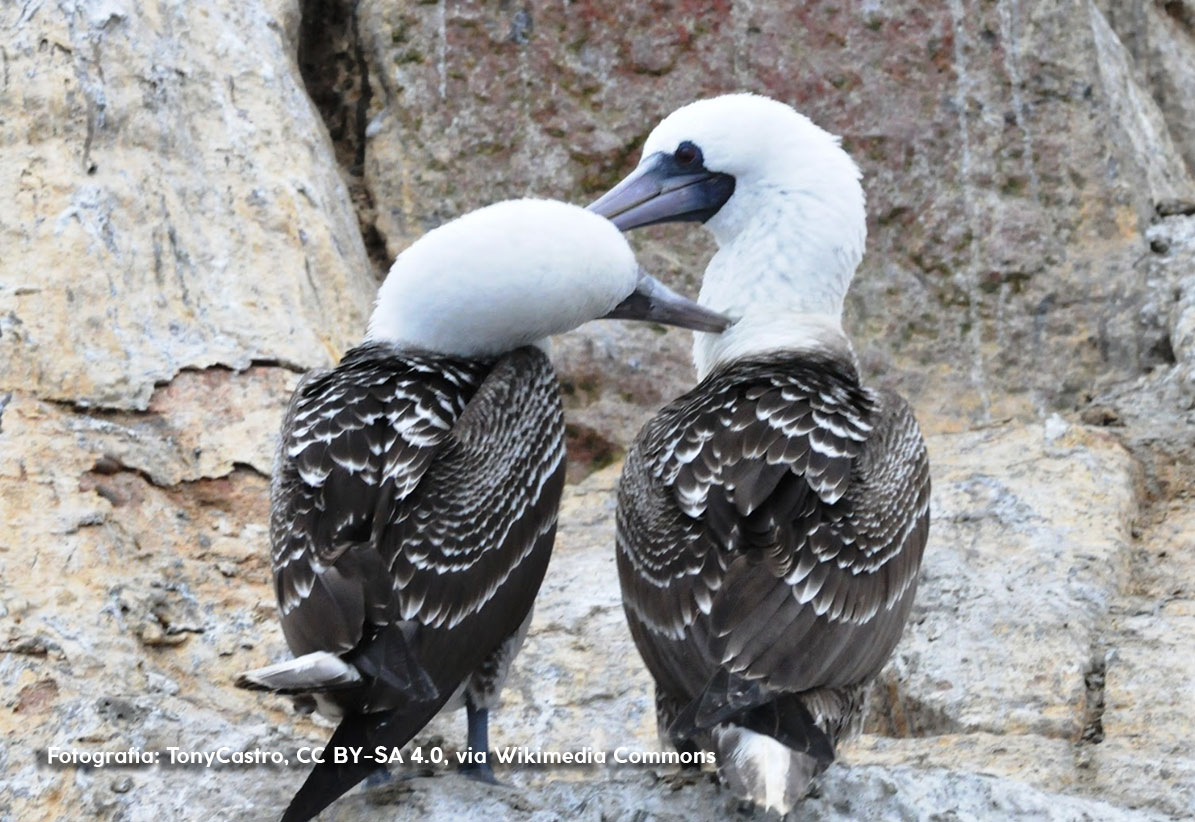
Guanay Cormorant
Learn with Manuel Lara about Animals fertilizing the soil.
|
Leucocarbo bougainvilliorum (Lesson, 1837) |
Order: Suliformes |
Family: Phalacrocoracidae |
|
|
FEATURES |
DESCRIPTION The upper parts of the body are black, with a bluish tinge on the neck and head, while the neck, chest, belly and underside of the tail are white. The skin is deep red around the eyes and the base of the beak is pink. Their feet are also pink. |
||
|
HABITAT Is found along the Pacific coast of Peru and northern Chile. It breeds on ofshore islands and remote coastal headlands and feeds exclusively in the coastal environment. A small population also bred on a short stretch of the Patagonian Atlantic coast of Argentina, but now appears to be ecologically ex!inct. |
|||
|
IMPORTANCE FOR AGRICULTURE: Extensive guano mining in the 19th century caused severe population declines through high levels of constant disturbance, habitat conversion and direct exploitation. Unrestrained guano extraction on breeding islands displaced large numbers of birds and caused the loss of entire colonies. Exploitation of guano is still ongoing, but at a much smaller scale and within regulatory frameworks. |
|||











